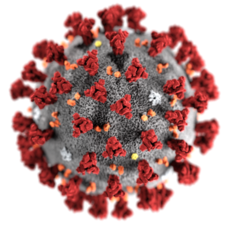 Is your practice prepared to care for a COVID-19 patient? Do you have protocols in place, have you trained your staff on them, and have you communicated them to patients? If you haven’t already, now is the time to prepare your practice to effectively manage treatment of patients who present with COVID-19 symptoms. The CDC provides guidance on the logistical aspects of preparing your practice. We recommend you read the CDC guidance in its entirety, but here are some key takeaways:
Is your practice prepared to care for a COVID-19 patient? Do you have protocols in place, have you trained your staff on them, and have you communicated them to patients? If you haven’t already, now is the time to prepare your practice to effectively manage treatment of patients who present with COVID-19 symptoms. The CDC provides guidance on the logistical aspects of preparing your practice. We recommend you read the CDC guidance in its entirety, but here are some key takeaways:
1. Review your practice’s emergency plan.
- Create an emergency contact list for key partners and staff, and ensure it is accessible. Know how to reach your local or state health department.
- Prepare emergency staffing plans in case of absenteeism due to a COVID-19 outbreak.
- Stay current on your community’s health care and public health emergency planning and response activities. Learn about plans to manage patients, accept transfers, and share supplies. Kevin McGrath, MD, FACAAI, chair of the Practice Management Committee, recommends consulting with your state and regional health departments, since they will have the most up-to-date data regarding the number and location of confirmed COVID-19 cases and those under investigation.
2. Prepare your practice to safely triage and manage patients with respiratory illness, including COVID-19.
- Develop algorithms to identify which patients can be managed by telephone and advised to stay home, and which patients will need to be sent for emergency care or come to your office.
- Post signs and posters at entrances and in strategic places providing instruction on hand hygiene, respiratory hygiene, and cough etiquette.
- Ensure supplies are available (tissues, waste receptacles, alcohol-based hand sanitizer).
- Provide facemasks at triage for patients with respiratory symptoms.
- Create an area for spatially separating patients with respiratory symptoms. Ideally patients would be >6 feet apart in waiting areas.
- Know how to reach your health system’s infection control team, if applicable, both during the work day and after hours.
3. Communicate with your patients.
- Instruct patients with respiratory symptoms to call before coming to your office, so staff can be prepared to care for them when they arrive.
- Educate patients about alternatives to in-patient visits, such as telemedicine visits, telephone check-ins, portal use, etc.
- Provide updates about changes to your policies regarding appointments.
- Consider using your facility’s portal, website and social media pages to share updates.
4. Implement CDC infection control procedures.
5. Consider alternatives to in-patient visits, where appropriate.
- Leverage use of telemedicine, portals, telephone and self-assessment tools.
- Read our recent Advocacy Insider article on how to get paid for remote visits.
6. Protect your employees.
- Ensure proper use of appropriate personal protective equipment (PPE) by all employees, and optimize your supply of PPE.
- Share information about what is currently known about COVID-19.
- Make sure employees are trained in and follow your practice protocols.
- Encourage sick employees to stay home.
Find out how allergists are preparing for COVID-19 by reading recent discussions on DocMatter. In addition, get personal insights from John Seyerle, MD, FACAAI about the allergists’ and immunologists’ role in mitigating effects of COVID-19.
We recommend you check the CDC COVID-19 website regularly, as information continues to be updated. The College also has a number of resources related to COVID-19. Another resource is the AMA’s COVID-19 Resource Center.


